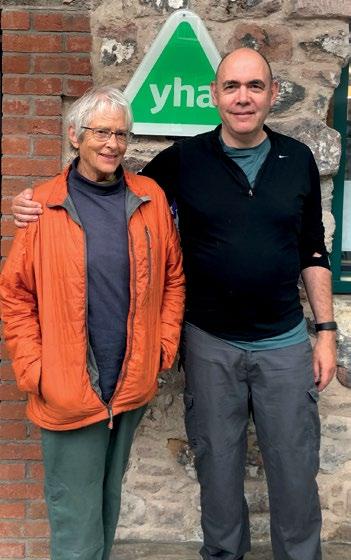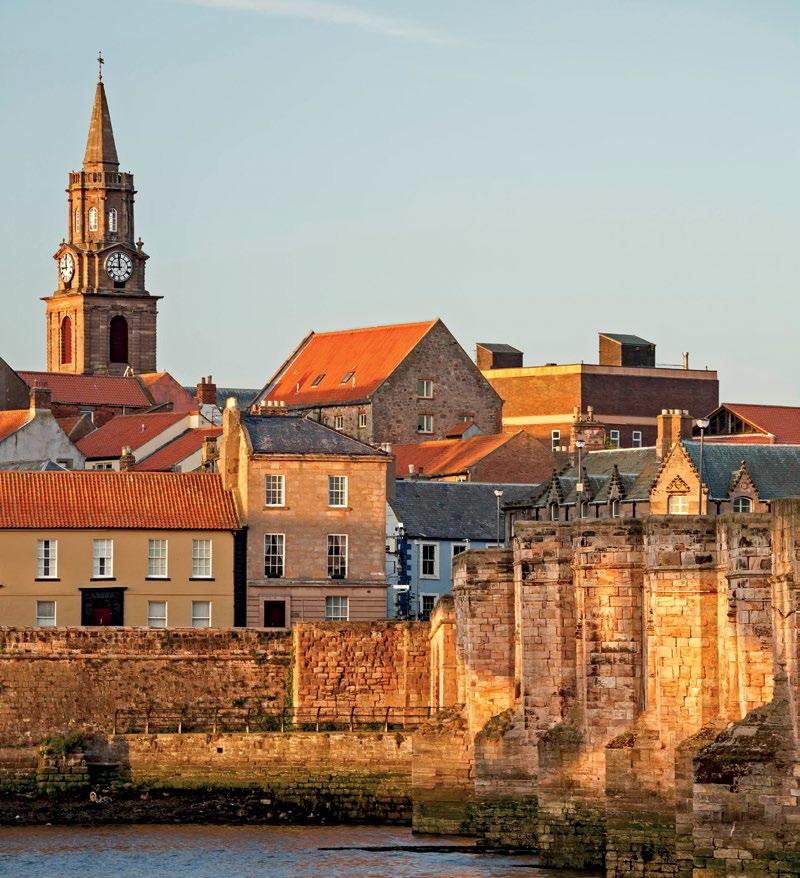
6 minute read
I’m an old youth-hostel fan
Travel
Late-youth hostel
Advertisement
Middle-aged William Cook and his mother rediscover the joys of youth hostelling – and the splendours of Berwick-upon-Tweed
Where did you go on your summer holidays? I took my mother to a youth hostel in Berwick-uponTweed, to celebrate her 80th birthday.
‘What a shameless cheapskate!’ I hear you cry. ‘What a penny-pinching skinflint! Couldn’t you have taken her to a nice hotel on the English Riviera?’
Not on your nelly. My mum adores Northumberland, and she can’t stand posh hotels. She’s always loved youth hostelling, she’d stayed in this hostel before and she told me it was really comfortable. I must admit I was sceptical (my memories of the Youth Hostel Association were rather Spartan) but I decided to give it a go. Well, it was her birthday, after all.
My recollections of youth hostelling are rooted in the late, unlamented 1970s, when hotels were dowdy and B&Bs were often dire. Youth hostels didn’t promise much, but there were no unpleasant surprises. It wasn’t always cheerful, but it was cheap, and you got what you paid for: a communal kitchen, a communal bathroom, and a bunk in a single-sex dorm.
I went youth hostelling several times in my teens (to the Lake District, Skye and Cornwall) and I had a great time.

William and mother at the Berwick hostel. Right: the pair 50 years ago
OK, so it was pretty basic, but what was the alternative? I couldn’t afford a hotel, caravanning felt too suburban and camping left you at the mercy of the capricious British weather.
Still, I’m far less intrepid than my mother. Throughout my adult life, I’ve relished staying in swanky hotels. What’s the point of going on holiday, if the place where you’re staying is less comfy than your own home? If it hadn’t been for her, I never would have set foot in another hostel. And I never would have known what I’d been missing.
On our arrival at the YHA in Berwickupon-Tweed, the first thing that struck me was how smart it was. This didn’t seem like a youth hostel – more like a budget boutique hotel. The hostel is in a converted granary. The ground floor is a cosy café. The biggest difference was the ambience. Youth hostels used to have stern wardens who seemed more like sergeant majors than like hoteliers, but the staff here were charming. As they told me, there have been a few changes since I last stayed chez YHA.
Bedding used to be a blanket and one of those ghastly sheet sleeping-bags – now it’s fitted sheets and duvets. You used to have to do a daily chore before you were released back into the community. Not any more. You can still cook your own grub, but they also serve

canteen food. There are still dormitories with bunk beds, but there are also private rooms for singles, couples or families (my mum and I shared an en-suite twin for £60 a night).
You don’t even need to be a YHA member to stay here any more (though membership, from £15 pa, gets you 10 per cent off every booking). And, contrary to popular misconception, there’s never been an upper age limit. Oldies have always been more than welcome. Most of our fellow guests were middle-aged: empty-nesters like me, or parents with teenage children.
So how did the YHA begin? Like a lot of hale and hearty notions, the idea originated in Germany, before the First World War, and was copied by British hikers in the 1920s. In 1930, various British hostelling groups amalgamated to form the YHA in England and Wales (joined by parallel organisations in Scotland and Northern Ireland).
The golden age of youth hostelling was either side of the Second World War and, following a period of decline, the association is now enjoying a discreet revival.
Once it was the butt of condescending jokes: who can forget Alan Partridge’s idea for a travel show (sadly never made) – Youth Hostelling with Chris Eubank? Yet, after decades in the doldrums, something’s shifted. Youth hostelling is (almost) fashionable again.
Why? Three reasons, I reckon. Since the financial crash, holiday budgets have got tighter. The novelty of staying in plush hotels has worn off. And the hostels have got a lot better.
The association now has 150,000 members, and turns over more than £50m a year. The number of hostels has halved, from around 300 in the 1950s to 150 today, and those that have survived are far smarter. The YHA in Berwick even won a RIBA award.
So what’s Berwick like? Delightful. I’d spent an idyllic afternoon here a few years earlier, on my way back to London from the Scottish Borders. Although I was eager to revisit it, I did think that, after a few days, we might run out of things to do. Not a bit of it. We spent five days in Berwick and when we left for home, there was still lots of stuff we hadn’t seen.
Berwick’s greatest glory is its magnificent battlements, erected by Edward I and reinforced by Elizabeth I. You can walk all the way round these walls, which provide stunning views across the River Tweed, out to sea and down into the antique town within. The Old Town is full of handsome, historic buildings, many of them Georgian, some a good deal older. Berwick’s striking parish church, Holy Trinity, was one of the few churches built during the Protectorate of Oliver Cromwell.
The only English territory north of the Tweed and previously Scotland’s greatest seaport, Berwick changed hands 13 times between 1296 and 1482. Although it’s been English for over 500 years, it still has one foot in each nation. The crosses of St George and St Andrew fly side by side outside lots of buildings. Scots and Northumbrian accents mingle in the local market. Berwick Rangers FC play in the Scottish League.
Berwick was a garrison town until the early 1960s, and the robust barracks, built 300 years ago, now house a fascinating military museum. Berwick’s art gallery has Old Masters from the Burrell Collection. There are more paintings at Paxton House, a splendid stately home a few miles away, across the border. There are several sandy beaches within walking distance of the walls, and some lovely walks along the Tweed.
Berwick suffered badly from the decline of its traditional industries. It used to be a busy port: herring- and salmon-fishing, shipbuilding, and freight and passenger shipping.
It’s now becoming a cultural destination. There are some good commercial galleries and quirky secondhand bookshops. Trendy bars and cafés are sprouting up alongside its traditional pubs and fish-and-chip shops. I thought we might be the only sightseers, but we met lots of kindred spirits. Our hostel was full.
Berwick’s most famous tourist was LS Lowry, who came here for his summer holidays for 40 years. He did lots of paintings here (a nice contrast to his sooty cityscapes) and there’s a wonderful Lowry Trail which doubles as a walking tour of the town. He stayed at the Castle Hotel, by the station. When I dropped in there, I heard a funny story.
Apparently, the hotel had a pretty receptionist. When Lowry returned there in the evenings, after a day’s drawing, he used to give her little sketches. But she had no idea who he was – so she threw them all away.
For information about youth hostelling, visit www.yha.org.uk. For information about Berwick-upon-Tweed, go to www. visitberwick.com










